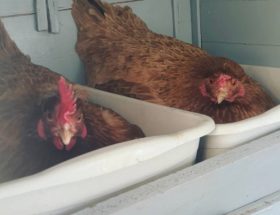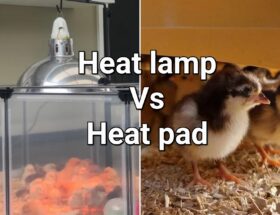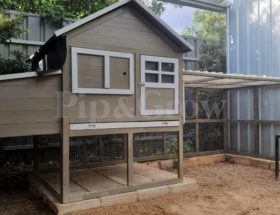Water plays a vital role in the absorption of nutrients from feed. Without adequate water intake, chickens may not be able to properly digest and utilize the nutrients in their diet. They also rely on water to help regulate their body temperature, especially during hot weather. Adequate hydration is essential for preventing heat stress and maintaining overall comfort and well-being.
Clean water helps maintain good health in chickens by preventing the spread of diseases and reducing the risk of bacterial contamination. Dirty or contaminated water can harbor pathogens that can cause illnesses and infections in poultry.
A chicken waterer serves the essential purpose of providing water to chickens conveniently and efficiently. There are various types of chicken waterers are available in the market, each with its own advantages and disadvantages. Throughout our experience, we’ve tried and tested different waterers, and we’re here to share our reviews on some of the products we’ve used.
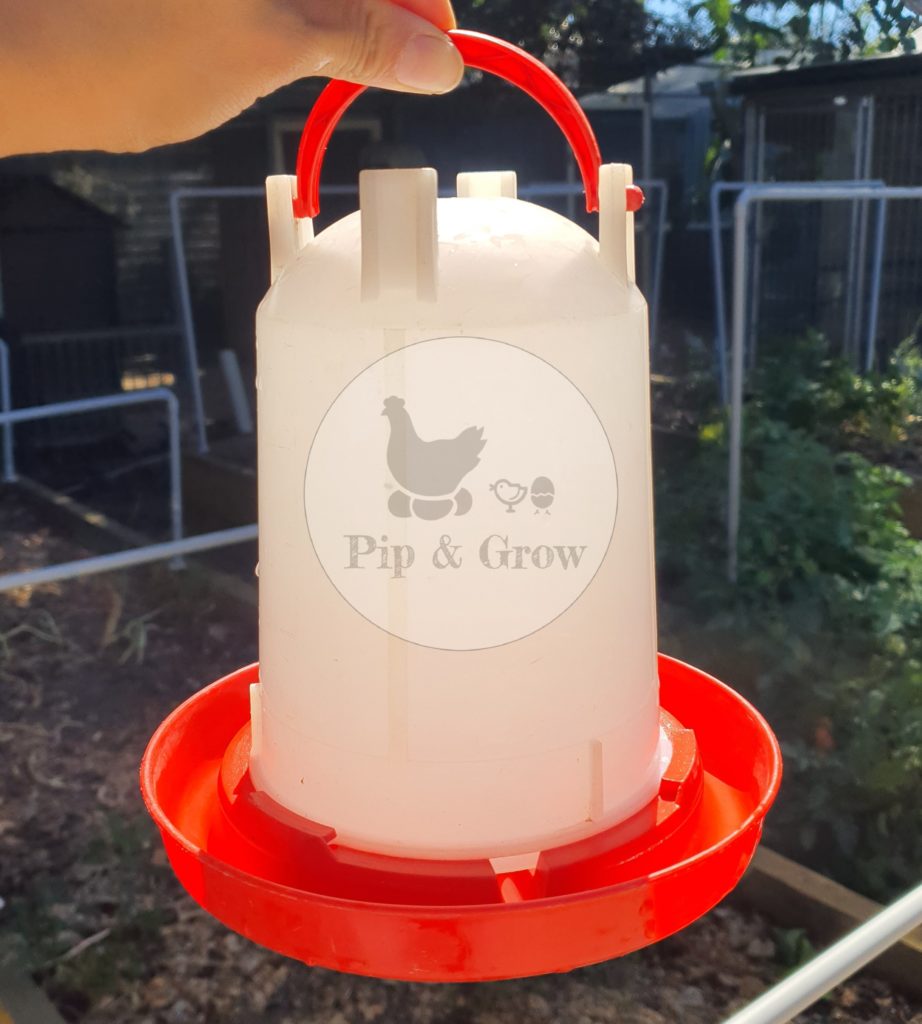
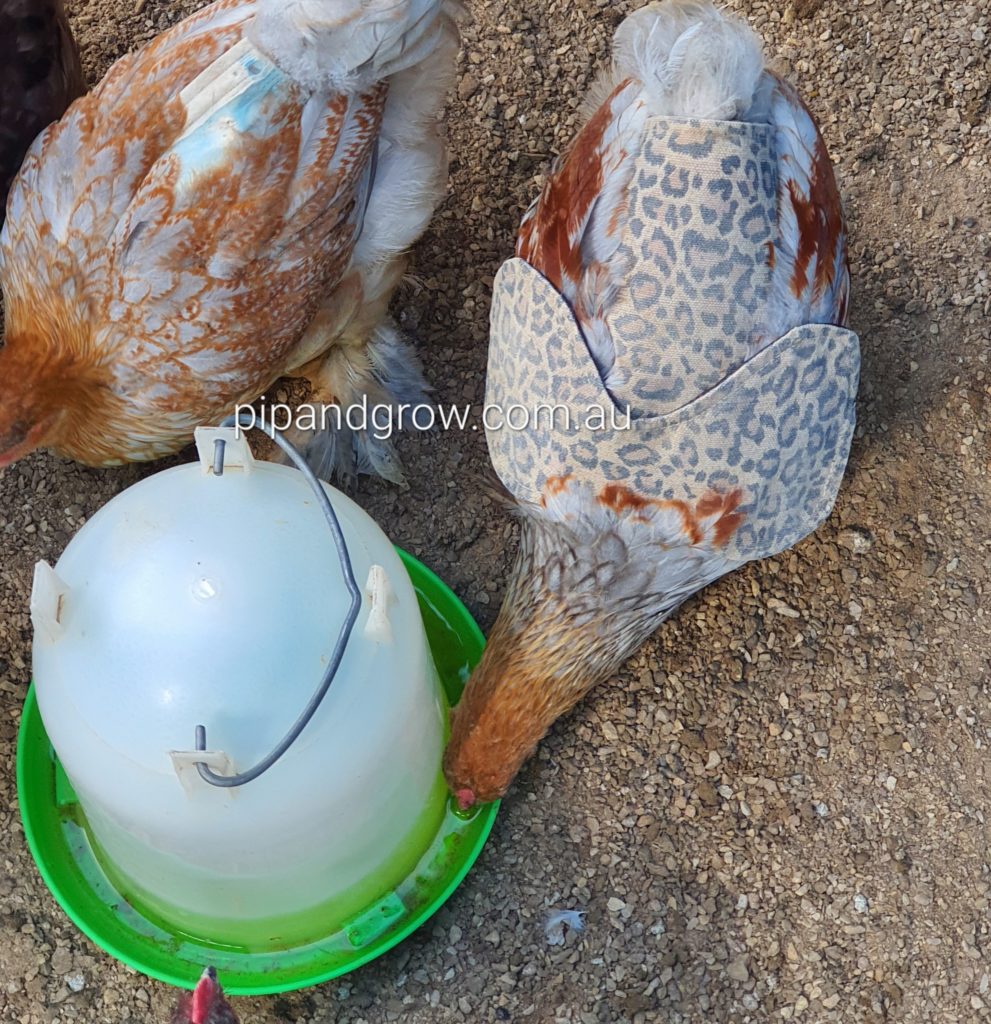
Traditional Gravity fed Waterer: This classic design typically features a plastic or *metal container with a reservoir mounted above the drinking area. As chickens drink, the water is automatically replenished from the reservoir, ensuring a constant supply of fresh water. The water is dispensed through a small opening, and the base of the container collects the water. The container is usually placed on the ground elevated slightly or hung up to prevent contamination.
*Please avoid using metal or galvanized waterers due to their potential reaction with water, leading to rust over time. This rust can pose a risk of metal poisoning to chickens if they are exposed to it for an extended period. Read related post on Australian Poultry Facebook Group
Pros:
- Affordable option.
- Comes apart into two section. Easy to clean.
- Available in various sizes to accommodate different flock sizes.
Cons:
- Susceptible to algae and bacteria growth if exposed to sunlight, requiring regular cleaning & maintenance to prevent contamination.
- Prone to contamination from chickens dipping their beaks to drink.
- During disease outbreaks such as respiratory or canker infections, contamination of the water in traditional waterers can facilitate the spread of illness among chickens, similar to sharing a cup with a sick person.
- Chickens may accidentally spill the water, leading to wastage and the need for frequent refilling
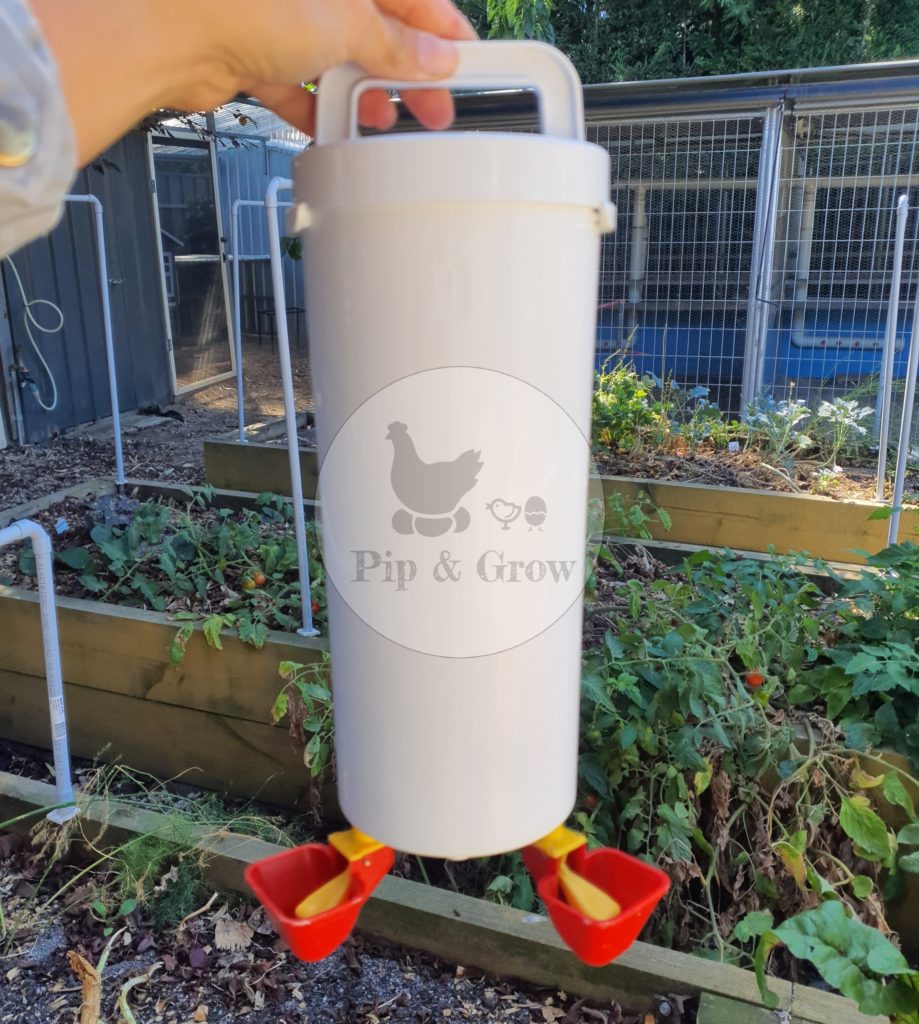
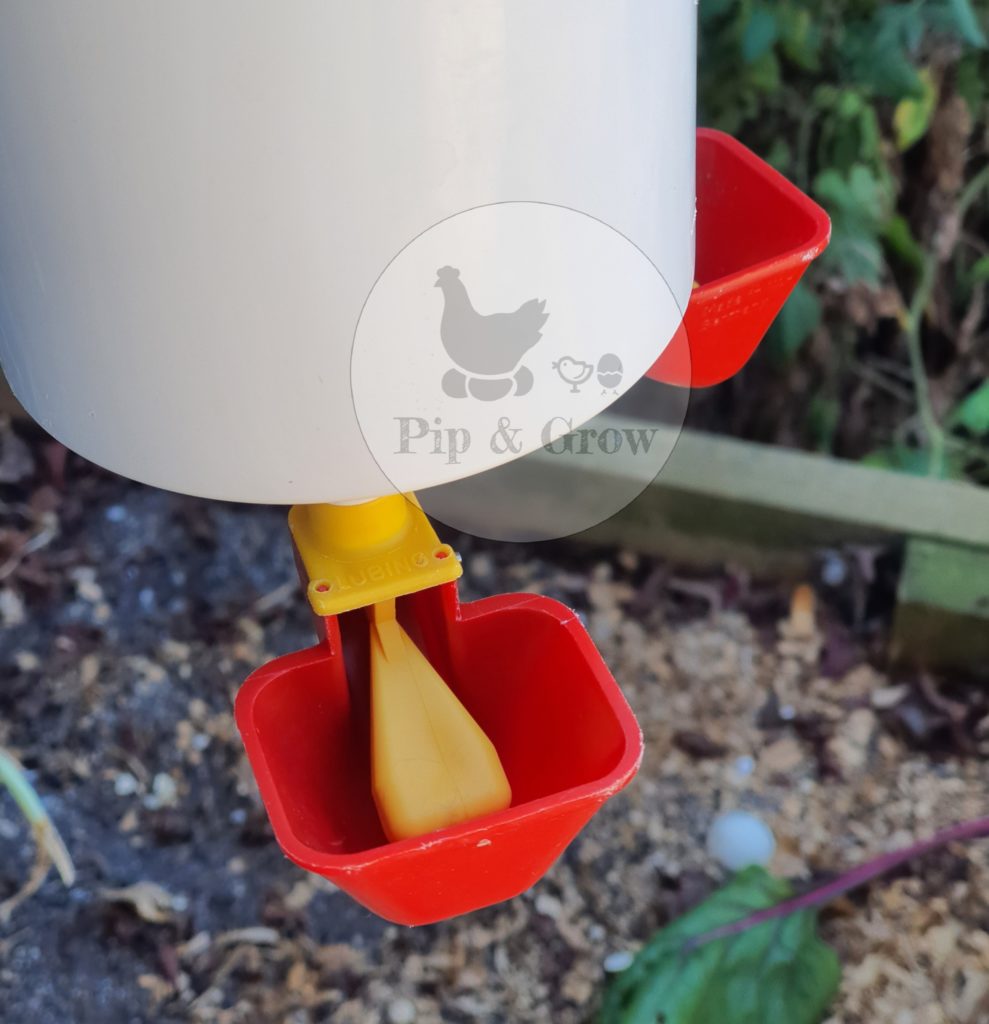
Cup waterers consist of individual cups attached to a water supply line. Each cup is equipped with a float mechanism that controls the water level, ensuring a constant supply of fresh water. When a chicken pecks at the trigger mechanism in the cup, it releases a small amount of water for the bird to drink.
Pros:
- Water in the reservoir stays clean.
- Minimal water wastage as the water is only released when the chickens trigger.
- Available in various sizes to accommodate different flock sizes.
- Often made from UV-safe plastic, cup waterers are durable and weatherproof, suitable for various poultry setups including coops, runs, and free-range areas.
Cons:
- May have a higher upfront cost compared to traditional waterers.
- The cup area is susceptible to algae growth if exposed to sunlight and contamination from chickens dipping their beaks to drink, necessitating regular cleaning and maintenance.
- While the water reservoir is easy to clean, the cup parts require disassembly for thorough cleaning, which can be time-consuming and tedious.
- During disease outbreaks, contamination of the water in the cup can facilitate the spread of illness among chickens.
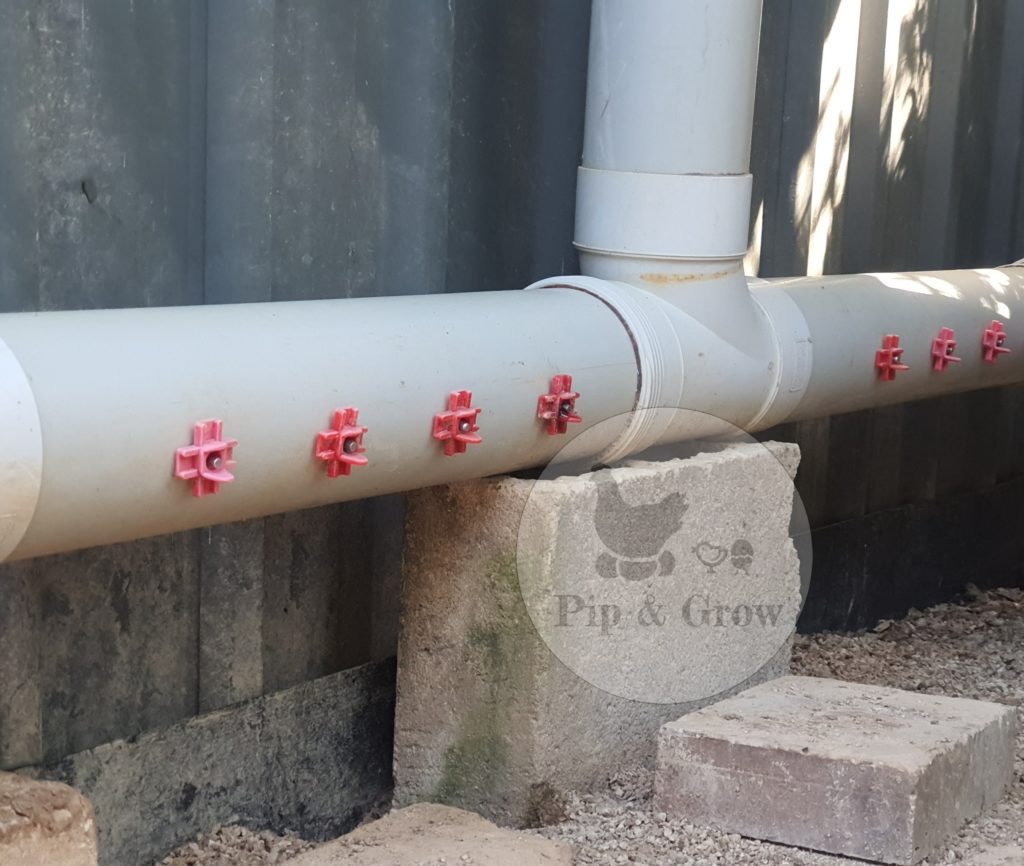
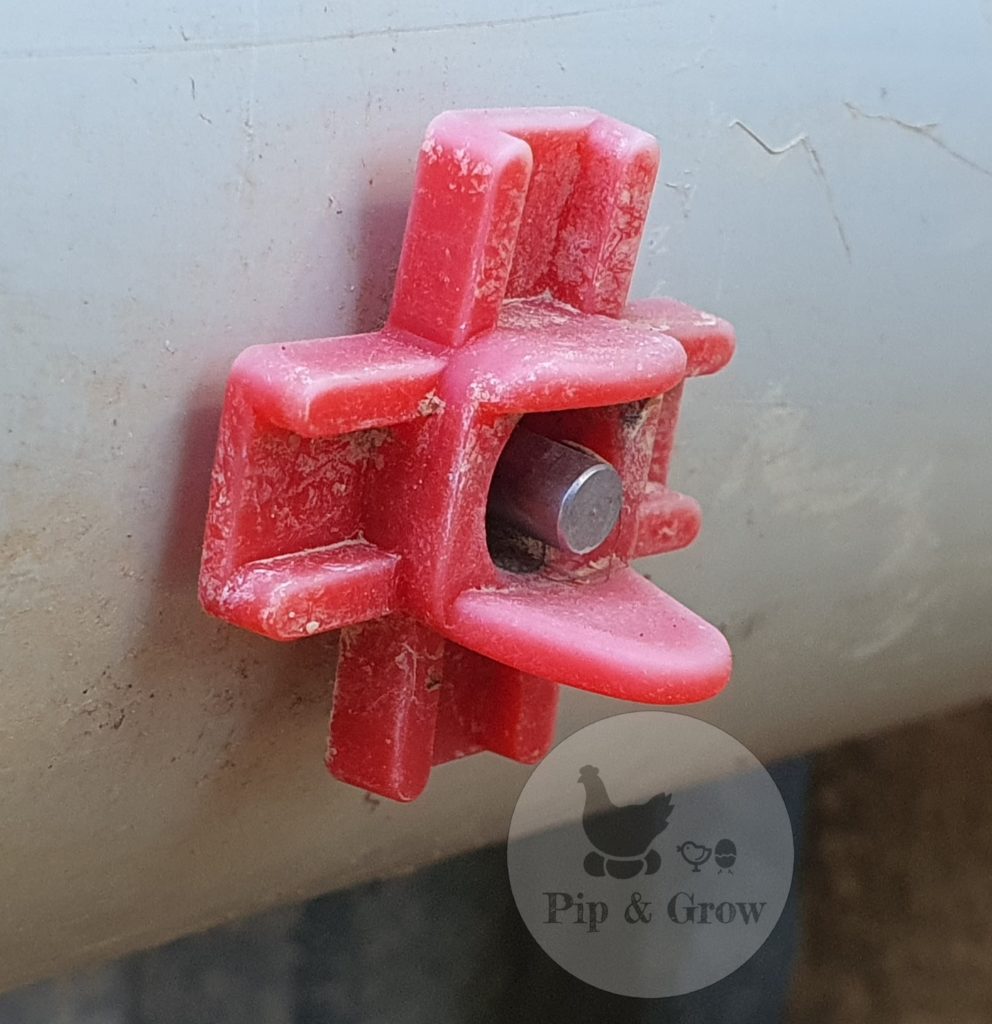
Nipple waterers are designed with small metal or plastic nipples that release water when pecked by the chickens. These waterers are usually attached to a pipe or bucket.
Pros:
- Deliver water directly to the chickens’ beaks, minimizing the risk of contamination from dirt, feces, or bedding. This helps maintain better hygiene and reduces the spread of diseases within the flock.
- It releases water only when chickens peck at the nipples, reducing wastage and keeping the coop or run drier and cleaner
- Less frequent cleaning and are less prone to algae growth or bacterial contamination.
- Suitable for chickens of all ages, from chicks to adult birds, just need to adjust height of the waterer.
- Made from durable materials such as stainless steel or plastic and are designed to withstand various weather conditions, making them suitable for both indoor and outdoor use.
Cons:
- May have a higher upfront cost compared to traditional waterers.
- Some chickens may initially have difficulty learning how to use nipple waterers, especially if they are accustomed to other types of waterers. However, with gentle encouragement, most chickens quickly learn to use them.
- Nipple waterers can occasionally become clogged with debris or mineral deposits, leading to reduced water flow. Additionally, the O-ring inside the nipple may fail, causing leakage. Regular inspection and maintenance are necessary to ensure proper functioning and prevent issues.
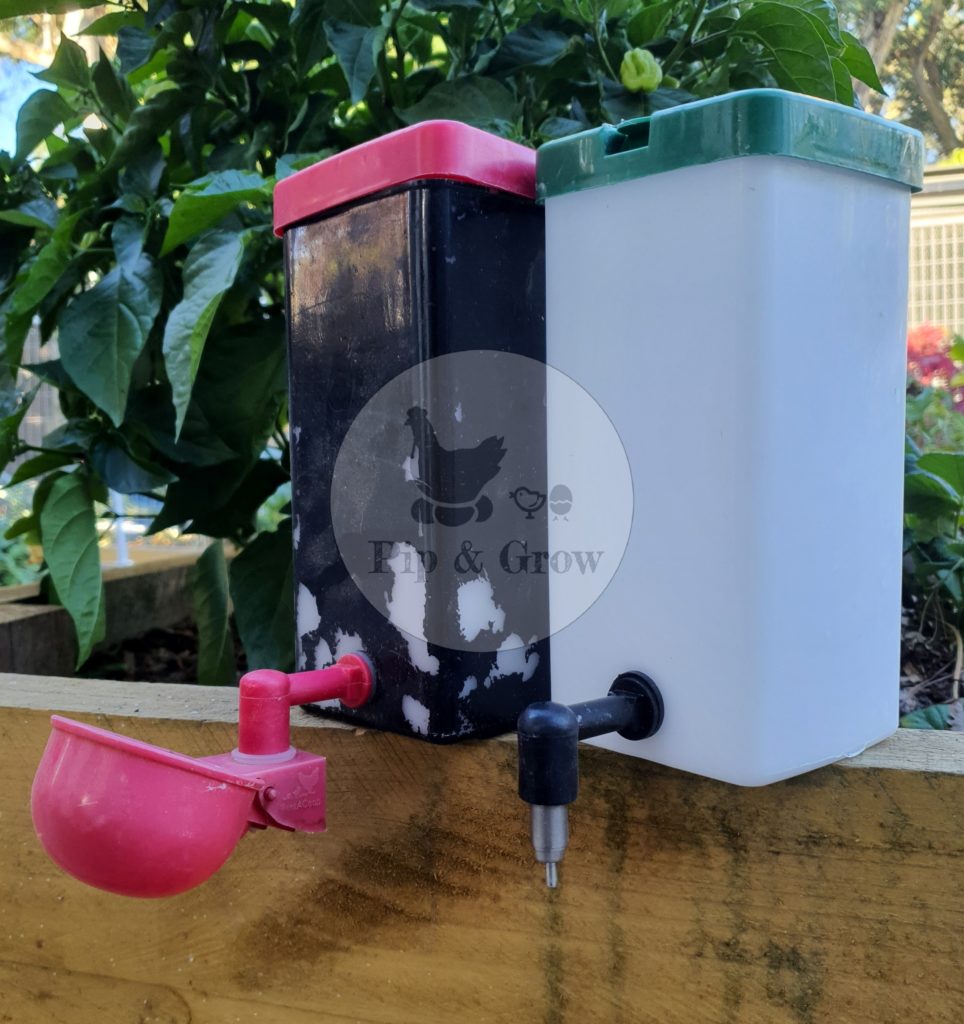
At Pip & Grow, we employ a variety of waterers tailored to the specific growth stages of our birds. In our grower pens and breeder pens, we utilize a Nipple waterer system integrated with PVA Pipe and stainless steel float mechanisms. This setup ensures that clean water is consistently available, as the system automatically replenishes water levels as needed.
Despite occasional challenges such as O-ring failures leading to dripping nipples, we’ve mitigated these issues by keeping spare nipples readily available for quick and easy replacement. While the initial design and construction of our waterer system required significant effort, it has proven to be a worthwhile investment. Not only has it substantially reduced the time and effort needed to care for our birds, but it has also provided us with peace of mind knowing that fresh, clean water is always accessible. With our waterer system in place, we’re able to shift our focus to other critical aspects of poultry management, confident in the efficiency and effectiveness of our setup. Overall, we’re pleased with the performance of our waterer system and its contribution to the health and well-being of our birds at Pip & Grow.
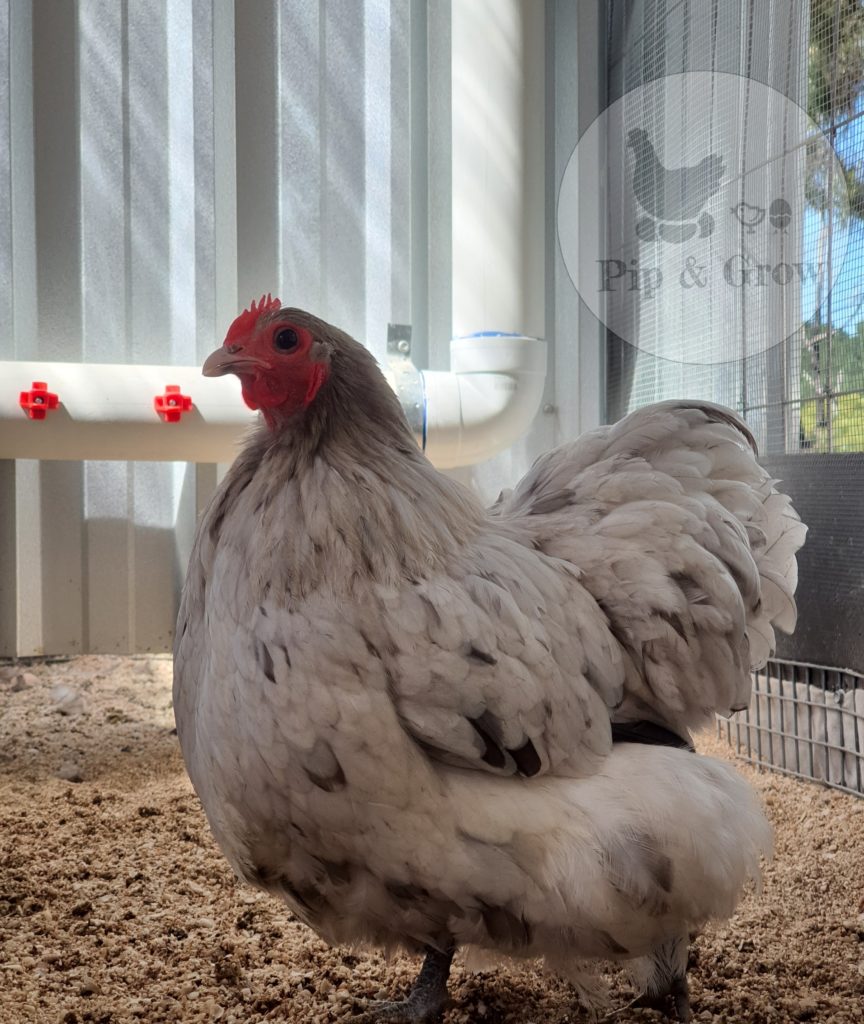
Every poultry keeper’s circumstances vary, and selecting the appropriate type of waterer depends on factors such as flock size, housing setup, and personal preferences. Regardless of the chosen type, ensuring chickens have uninterrupted access to fresh, clean water is fundamental for their health and well-being.
Regular monitoring of waterers is essential to verify their functionality and to ensure that water levels remain adequate. Additionally, maintaining cleanliness through routine cleaning and sanitization of waterers is crucial to prevent contamination and uphold good hygiene standards within the flock. Ultimately, prioritizing continuous access to fresh water and implementing proper maintenance practices contribute significantly to the overall health and welfare of chickens, regardless of the specific type of waterer chosen for their care.
